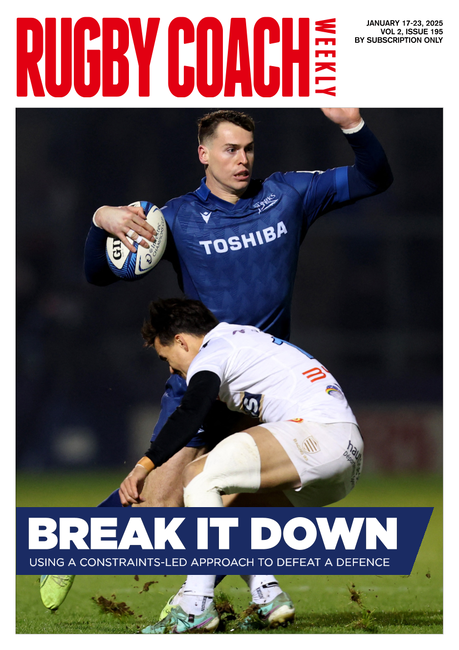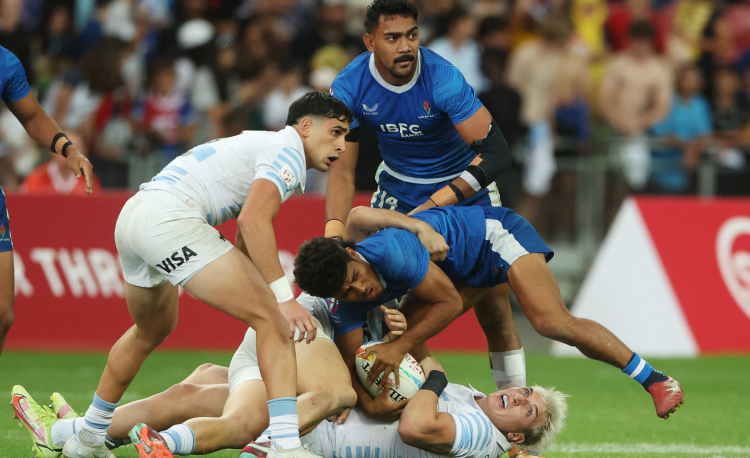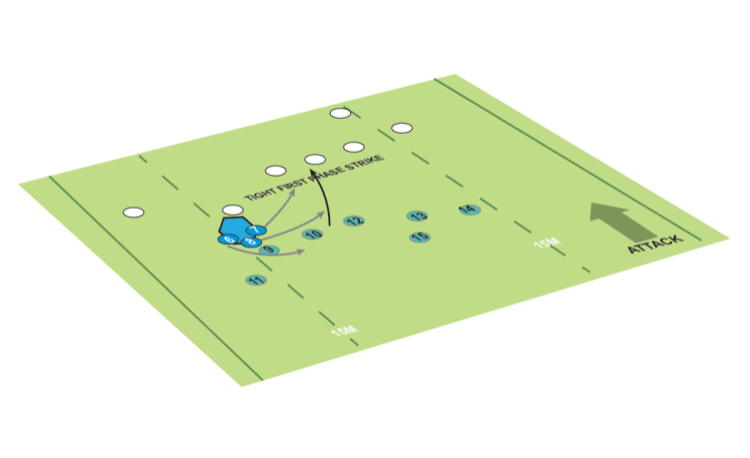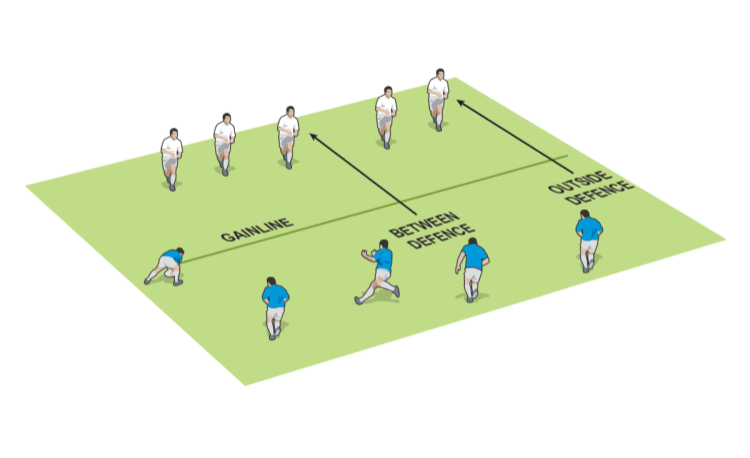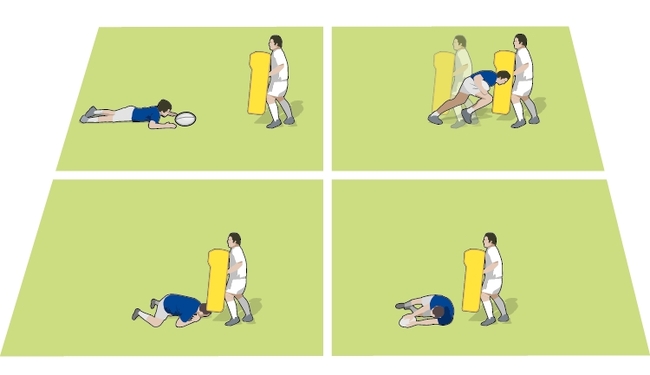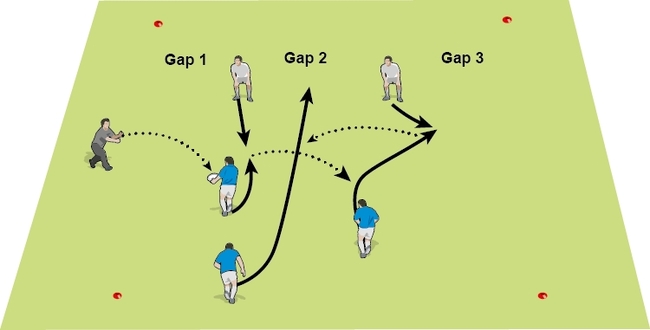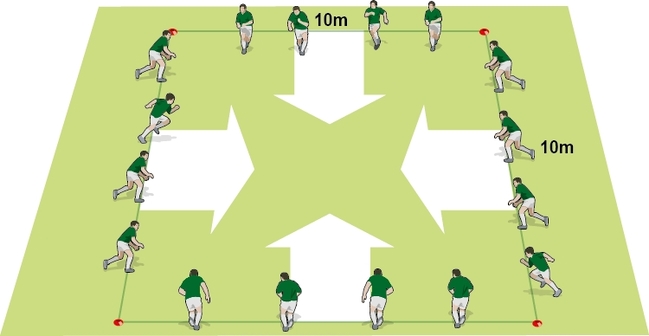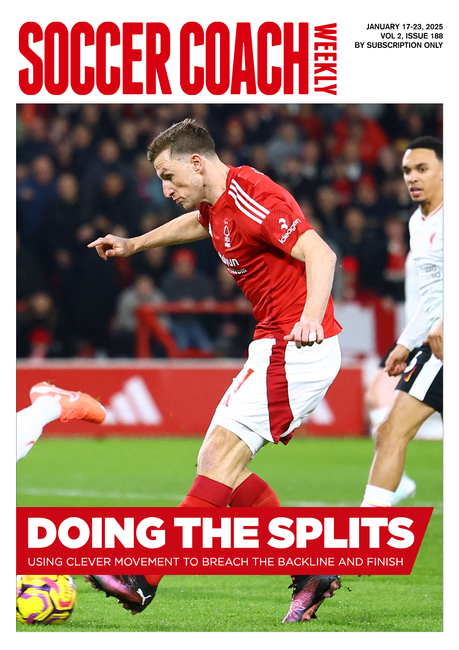The four families of support: Life, early, late and deep
Understand the position of support players in relation to the ball to help break the advantage line. By Jean Bidal, coaching guru for the FFR and the IRB.
Setting up an arrow gives you more chance to cross the gain line.
The groundwork for the arrow occurs upstream among the players in the ’early family’, while those in the ’life of the ball’ family ensure its conservation.
At the front of the arrow is a player who takes on a defender or goes for space. The player who passed them the ball is on one side of the arrow, with another on the outside. Finally, there is a player just behind the ball carrier.
The ball lives and is passed in front of the defence. To help players understand their position in relation to the ball and their role, they must ask three questions:
- Where am I in relation to the ball?
- What should I do in this position?
- What is my role?
Once a player knows their position relative to the ball, they will belong to one of four ’families’ - ’life of the ball players’; ’early players’, ’late support players’ and ’players in deep support’.

‘Life of the ball players’
These players will primarily protect the ball - their duty will be to fight, standing or to the ground. The running lines of these close team-mates will be:
- Converging on the ball
- Flexed and braced stance
- Speed or explosiveness on impact
- Powerful in their backs and arms - we can then talk of ’thrusting’, ’cleaning’, ’lifting’, ’removing’ and ’repulsing’.
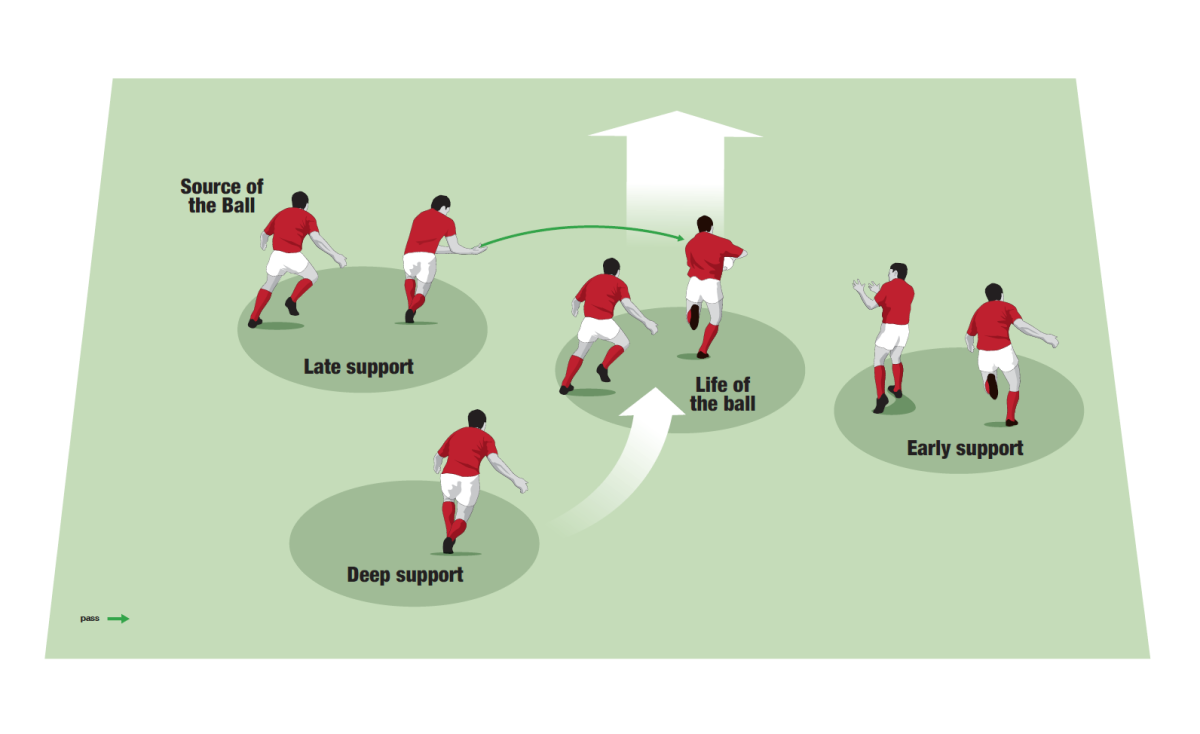
‘Early players’
While players in the ’life of the ball’ family ensure its protection, early players will:
- Use the full width of the pitch, stretching the defence to the limit to open up gaps
- Maintain the depth necessary to allow them to pass the ball while staying far enough away from the defenders to offload the ball laterally, kick it into a gap or hold on to it to set up a duel between attacker and defender, where the attacker wants to beat their opponent with skill, strength and speed.
These players will strive to break through the defenders to gain any advantage and will already be positioned on the defender’s outside shoulder in order to do so.
They will look away from the contact zone to analyse the balance of power by:
- Seeing how many defenders they have to beat.
- Analysing the defensive line, such as the position of the deep wings; placement of the full-back behind the ball or at the end of the line; openings between the locks, huddled or not.
They will try to spot the clues that will allow them to choose the right attacking move when they get the ball.
Examples of such thinking around decision-making might be: “There’s three of them in defence and four of us, so use quick play on the outside to outflank them", or “Our offensive line has stretched the defence cross-field, so we should set up an arrow in one of the gaps".
‘Late support players’
Those players who are in late support or inside the line of the ball quite often originate from the ’life of the ball’ family. They reposition themselves across the field according to the space available.
Those furthest away will follow the movement of the ball while spreading out. They won’t be involved in the confrontation nor in using the ball, but they will analyse the situation and prepare for future phases of play.
Those closest to the ’life of the ball’ family are very reactive, analysing the balance of power and asking themselves: “Am I needed in the ’life of the ball’ or ’early’ family?”.
If they are, they will act at once. Otherwise, they will remain watchful within the ’late support’ family while following the progression of the ball.
These players recover physically, while remaining aware of the state of play, to react instantly if needed.
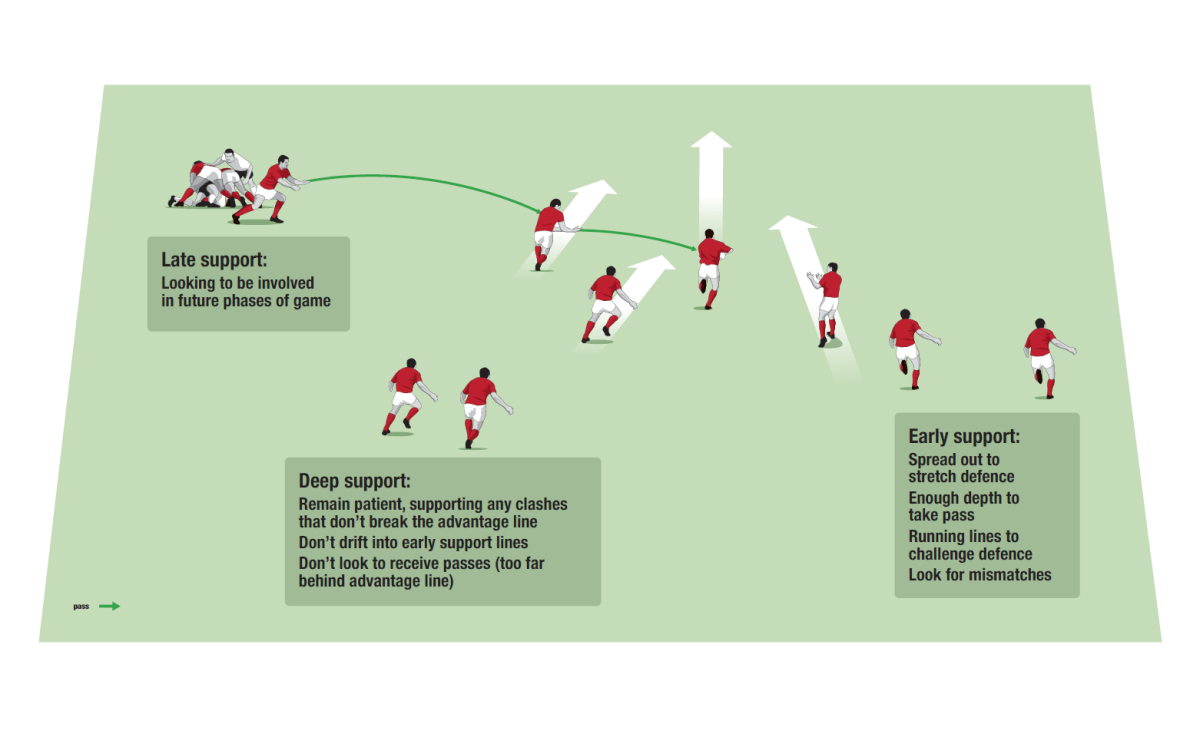
‘Players in deep support’
The ’players in deep support’ have already pre-positioned themselves behind the offensive line of ’early players’ or have broken away from the ’late support players’. Their cue will be the ball’s direction and the ball carrier’s inside shoulder.
These deep support players often make one of these two mistakes:
- Well-positioned deep behind the ball at the start of the phase, they come and stand between the early players, thus reducing the area, helping the opponent’s drift defence and losing all their forward penetration.
- They remain behind the early players who circulate the ball laterally but they place themselves on the ball carrier’s outside. If the latter breaks through or is blocked by the defender, they can no longer play their part as deep support since they have overshot the ball.
Another prevalent mistake is made by early players. On sensing the presence behind their backs of one or two deep support players, often forwards, they sometimes no longer seek to attempt a direct duel in the defensive gap but give the ball away to the deep support player.
The latter is quite far from the advantage line and even if they are powerful and running at full speed, defenders often stop them. Those players in deep support must remain patient and allow the early players to attempt duels.
They should set up an arrow in one of the gaps they have prepared and intervene from deep, coming forward to ensure crossing of the gain line, then keep going forward or maintain possession of the ball if the attempt fails.
Summary
- Good players will be able to answer the question, “Where am I in relation to the ball?” so that they know their place in one of the four families of the game, and know exactly what they are expected to do.
- If they are in the ’life of the ball’ family, they ensure the protection of the ball and its forward progress thanks to the collective thrust.
- If they are in the ’early’ family, they attempt to outflank the defence by passing the ball or setting up an arrow.
- If they are in the ’deep support’ family, they work on the line of the ball carrier by positioning themselves to ensure the continuity of the breakthrough and the protection or re-direction of the ball in case of blocking.
- If they are in the ’late support’ family, they recover while following the ball’s direction and anticipate the way play will go while asking: “Should I remain in this family and wait for a reversal of attack, or join the ‘life of the ball’, ‘deep support’ or ‘early’ family?”. To do so, the player will analyse various criteria related to the balance of power - for instance, is the ball moving forward or are we being held up? Will the ball soon be released or do they need my help?
Related Files
Newsletter Sign Up
Coaches Testimonials

Gerald Kearney, Downtown Las Vegas Soccer Club

Paul Butler, Florida, USA

Rick Shields, Springboro, USA

Tony Green, Pierrefonds Titans, Quebec, Canada
Subscribe Today
Be a more effective, more successful rugby coach
In a recent survey 89% of subscribers said Rugby Coach Weekly makes them more confident, 91% said Rugby Coach Weekly makes them a more effective coach and 93% said Rugby Coach Weekly makes them more inspired.
Get Weekly Inspiration
All the latest techniques and approaches
Rugby Coach Weekly offers proven and easy to use rugby drills, coaching sessions, practice plans, small-sided games, warm-ups, training tips and advice.
We've been at the cutting edge of rugby coaching since we launched in 2005, creating resources for the grassroots youth coach, following best practice from around the world and insights from the professional game.

